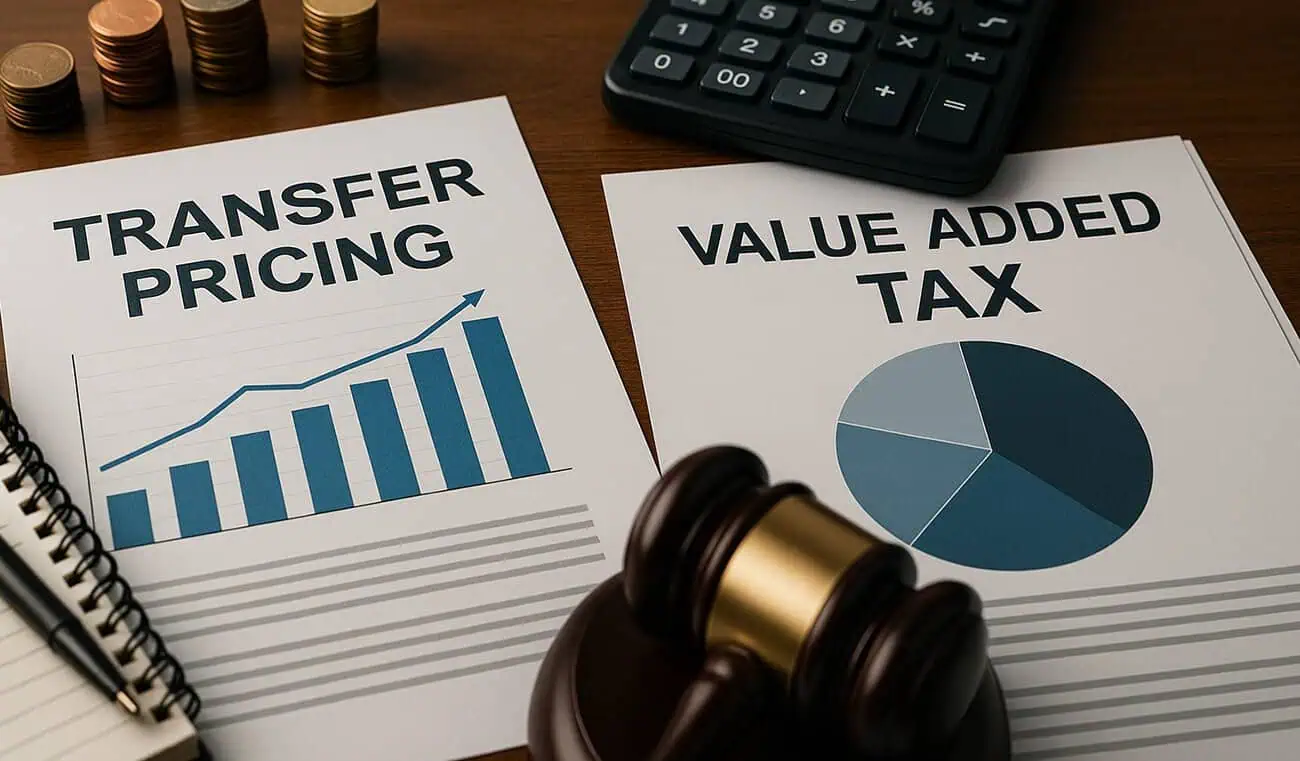
VAT Consequences of Transfer Pricing Adjustments
What Businesses with EU subsidiaries need to Know in 2025?
For a long time, it was generally assumed that value-added tax (VAT) and transfer pricing operate independently and do not affect one another.
However, in their efforts to increase revenue, tax authorities have increasingly attempted to connect transfer pricing adjustments to VAT. They often argue that if a transfer pricing adjustment changes the value of a transaction, this should also alter the VAT due on that transaction.
This approach creates practical challenges and can potentially lead to substantial retrospective VAT liabilities. Unsurprisingly, companies are often resistant to this interpretation, and some disputes have been brought before tax tribunals.
Interaction Between VAT and Transfer Pricing Rules
The key difficulty lies in the fundamentally different objectives of the two regimes:
- From a VAT perspective, the taxable amount is usually the price actually paid for a supply. While this often aligns with the market value, VAT rules do not generally require market-value pricing, except in certain anti-abuse provisions outlined in Articles 72 and 80 of the VAT Directive. These provisions aim to prevent VAT advantages arising from intra-group transactions, particularly where VAT input cannot be fully recovered.
- Transfer pricing, on the other hand, focuses on establishing the arm’s length value of transactions between related parties. Methods may examine specific transaction prices or assess profit margins to determine what would be expected in the open market.
Because of these differing principles, it is not straightforward to determine how VAT should respond to transfer pricing adjustments.
A transfer pricing adjustment typically indicates that the value of a transaction between related entities was not at arm’s length and must be corrected. VAT, however, does not generally consider whether the price is higher or lower than market value; it is based on the actual consideration received, except in the limited cases allowed by the anti-abuse rules.
Additionally, VAT requires a direct link between the supply and the payment received. In certain situations, a transfer pricing adjustment could theoretically affect the VAT base, but most adjustments are based on profitability analyses rather than the value of specific goods or services. Therefore, they often cannot be directly linked to individual transactions.
From this perspective, VAT adjustments are typically unnecessary unless the method clearly identifies the transactions affected. However, no official guidance currently confirms this approach.
Another consideration is whether adjustments made by tax authorities should trigger VAT changes, given that these adjustments usually only affect the audited party and not the other side of the transaction.
Recent Developments and Case Law
There was hope for clarification in 2025 through two cases before the Court of Justice of the European Union (CJEU):
- Arcomet Tower Crane (Case C‑726/23): The Court was asked whether payments by a subsidiary to its parent, resulting from a transfer pricing adjustment, constitute consideration for a supply for VAT purposes. The Advocate General (AG) opined that these payments should be treated as VATable service consideration. Although not binding, the AG’s reasoning often influences the Court’s final decision, suggesting VAT rules may take precedence over transfer pricing principles.
- Högkullen AB v. Skatteverket (Case C‑808/23): This case examined whether services provided by a holding company to its subsidiaries should be charged based on open market value. The Swedish tax authorities argued that partial recharges, excluding overheads, resulted in a VAT advantage. The CJEU, however, concluded that each service must be evaluated individually, rather than treating the transaction as a single bundled supply.
Both cases highlight the CJEU’s cautious approach to addressing the complex interaction between transfer pricing adjustments and VAT. Even with these cases, no comprehensive guidance has emerged.
Risks of Non-Compliance
The main concern is that EU tax authorities may increasingly treat certain transfer pricing adjustments as VATable supplies. The AG’s view in Arcomet suggests that VAT rules could override transfer pricing outcomes. Companies with EU subsidiaries should review their transfer pricing adjustments to ensure they do not inadvertently trigger VAT liabilities.
If you have further questions, our accountants will be happy to provide you with personal advisory. Additionally, we are available to advise you throughout France and Germany by phone and video conference. Your Franco-German tax consultancy FRADECO.
Disclaimer
Although the greatest possible care has been taken in the preparation of this newsletter, we reserve the right to make changes, errors, and omissions. The abstract legal presentation in this newsletter is no substitute for individual civil and tax law advice on a case-by-case basis. Subsequent changes to the legal framework, the views of the German or French tax authorities or case law, including with retrospective effect, are possible.

